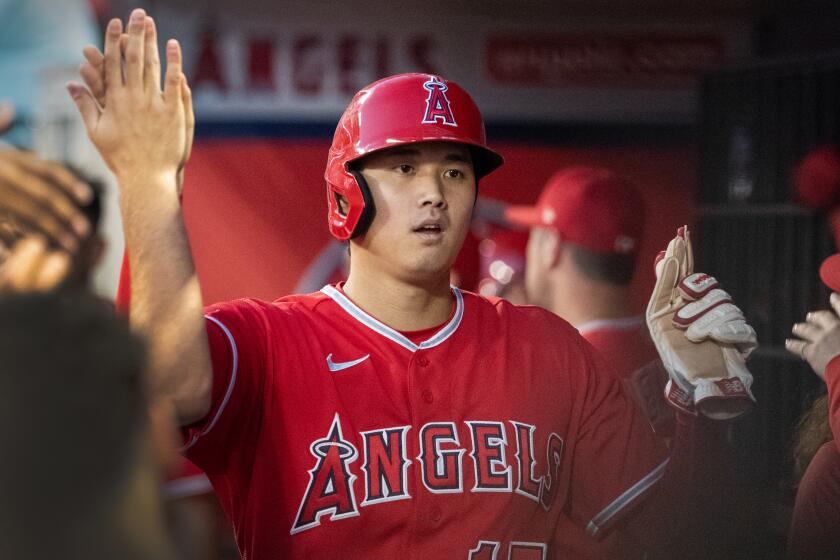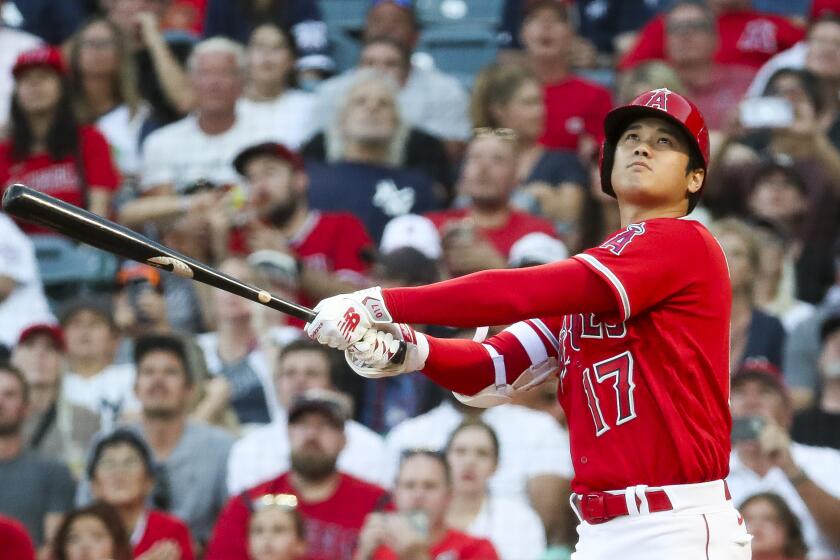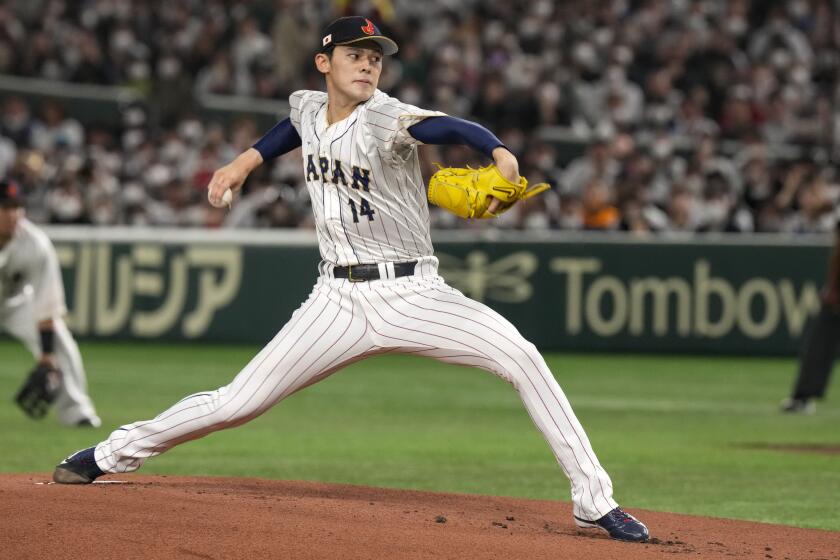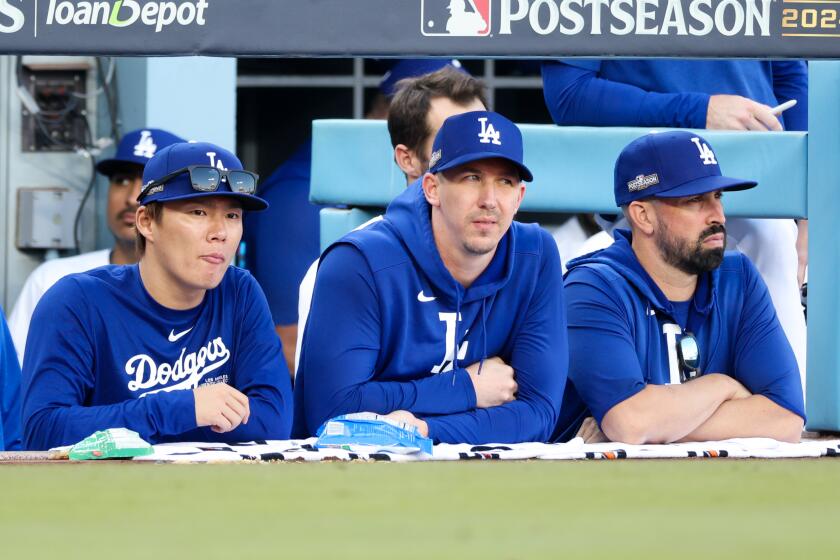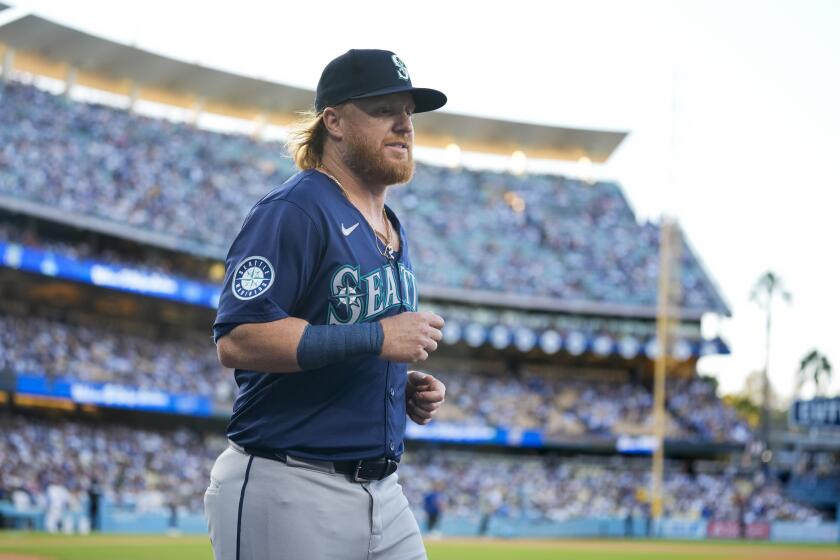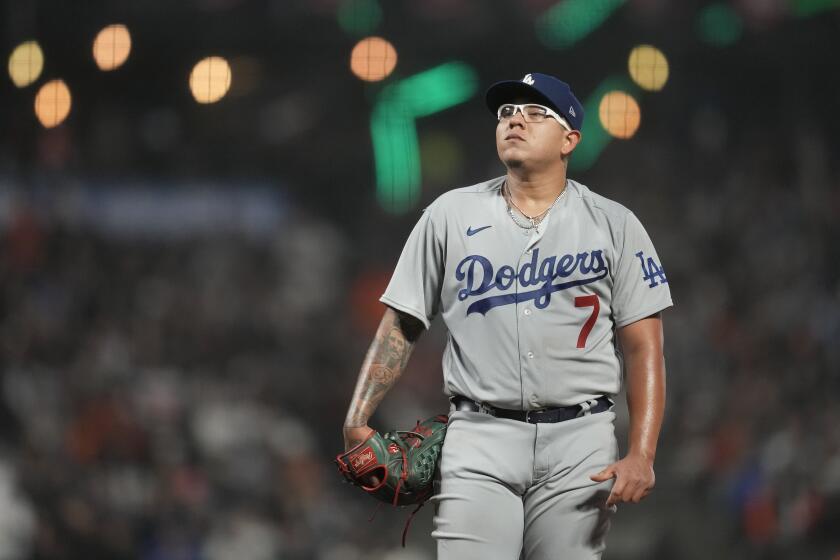Meet Shohei Ohtani’s surgeon, who fixes sports’ biggest stars and saved his $700-million arm
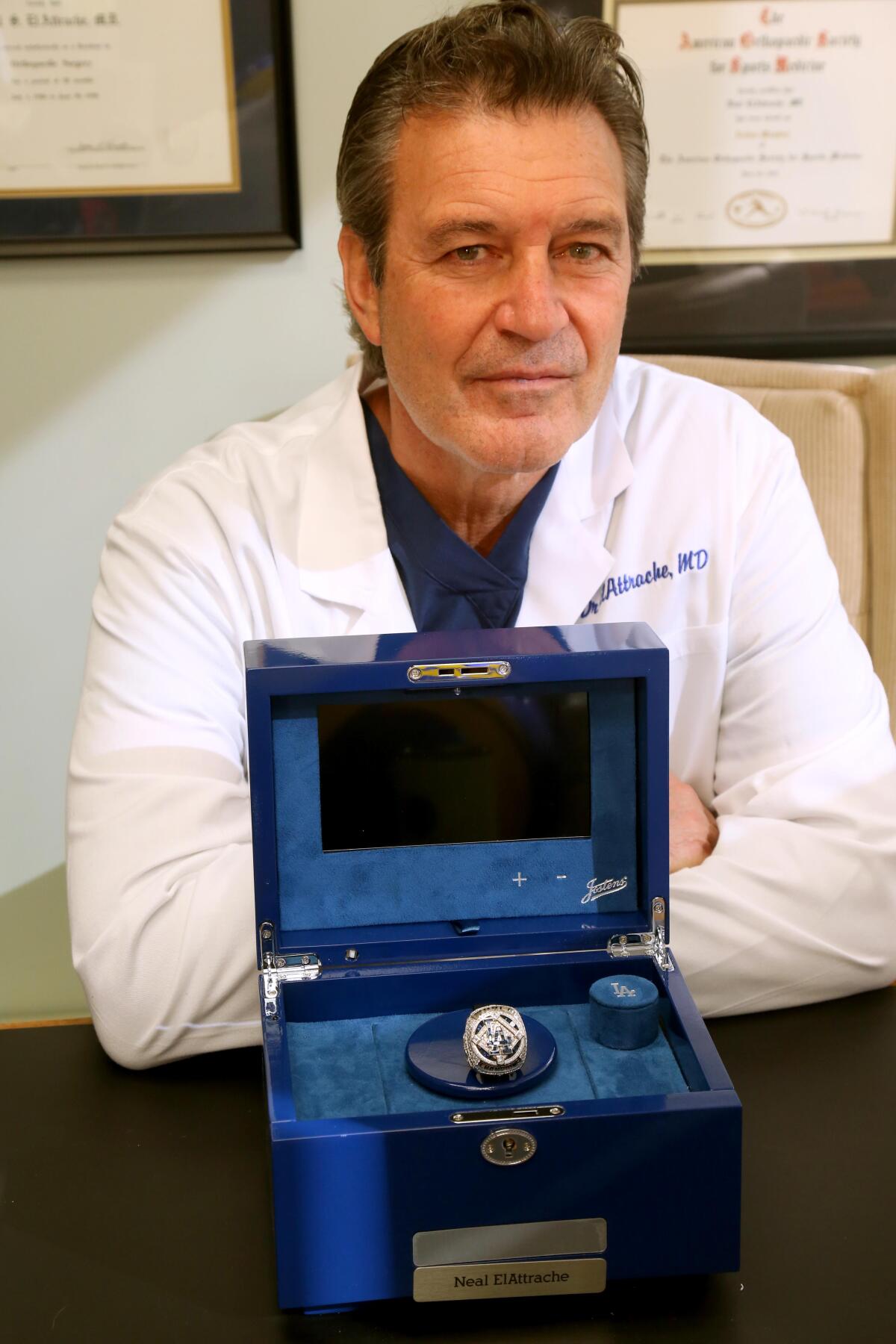
The Dodgers will unwrap their spectacular holiday prize Thursday with the introductory news conference of Shohei Ohtani, the two-way superstar and two-time American League most valuable player. There’s global appeal with the event scheduled for Thursday afternoon because that’s Friday morning for the audience in Japan.
Missing from the festivities will be Dodgers team physician Neal ElAttrache, who has a full slate of NFL surgeries to perform.
For him, it’s a routine Thursday.
The Dodgers’ two-way superstar can leave the team early if certain personnel are no longer in the organization.
“It’s not that I don’t think it’s a monumental day, a great day for the Dodgers and Los Angeles,” ElAttrache told The Times this week. “But there are things I’ve got to do.”
When it comes to Ohtani, ElAttrache was there for the essential parts.
Among the patients of the world-renowned surgeon are some of the most prominent athletes, including Tom Brady, Aaron Rodgers, Ben Roethlisberger, Conor McGregor, Georges St. Pierre, Klay Thompson, Jamal Murray, Cooper Kupp and Clayton Kershaw. ElAttrache repaired Kobe Bryant’s knee, shoulder and Achilles tendon.
During the last two decades, Los Angeles has become a mecca of sports medicine.
“Every Sunday night I watch ‘SportsCenter’ and I kind of know what my week’s going to be like,” said ElAttrache, who has spent his entire career at the Kerlan-Jobe Orthopedic Clinic.
ElAttrache performed two Tommy John elbow operations on Ohtani, the first in 2018 and the second in September.
Judging by the money involved, the Dodgers are banking on Ohtani’s full recovery. His 10-year, $700-million deal is believed to be the richest in sports history and by far the biggest in Major League Baseball, eclipsing Mike Trout’s $426.5 million.
“The Dodgers weren’t the only ones interested in giving [Ohtani] over half a billion dollars,” ElAttrache said. “There were a lot of teams that were in that ballpark.
“They all looked at the operation notes. They all had their doctors look at, ‘Is this guy going to be able to come back and be a two-way player? The money we’re paying, is it just for hitting? Is it for hitting and fielding? Or is it for hitting, fielding and pitching?’
“I guarantee you it’s one of the most scrutinized medical conditions ever studied.”
It was nearly 50 years ago that legendary Dr. Frank Jobe pioneered the procedure of replacing a damaged ulnar collateral ligament in the pitching elbow by grafting a tendon from the wrist of the other arm. Those wrist tendons, while durable, are not necessary to everyday functions, and in fact about 20% of people don’t even have them.
The first patient was Dodgers pitcher Tommy John, who wound up throwing more innings and winning more games (164) after the procedure than before it (124).
“Dr. Jobe made it so I could throw a baseball again,” John, 80, said from his home in Sarasota, Fla. “After surgery, I never missed a start, and I even pitched out of the bullpen every once in a while.”
ElAttrache began learning how to perform the surgery when he was a Kerlan-Jobe fellow in 1990, and Jobe painstakingly explained every tiny nuance of the operation, passing along any wisdom he could to his protégé. The two would operate together twice a week throughout the 1990s and were close friends until Jobe’s death in 2014.
“It should have been called the Frank Jobe operation,” ElAttrache said. “But with Frank being the man he was, it was all about the person he was treating. It wasn’t about him.”
By ElAttrache’s estimation, he has performed the operation between 50 and 75 times per year over his career. And although he has put his own signatures on the surgery — including a second graft to further fortify Ohtani’s elbow — the operation has remained largely the same since Jobe first performed it in 1974.
“It’s the most successful ligament reconstruction operation we have,” ElAttrache said. “Even more than ACL reconstruction.”
But there is a marked difference between a player returning to peak performance after a first Tommy John and a second, known as a Tommy John revision.
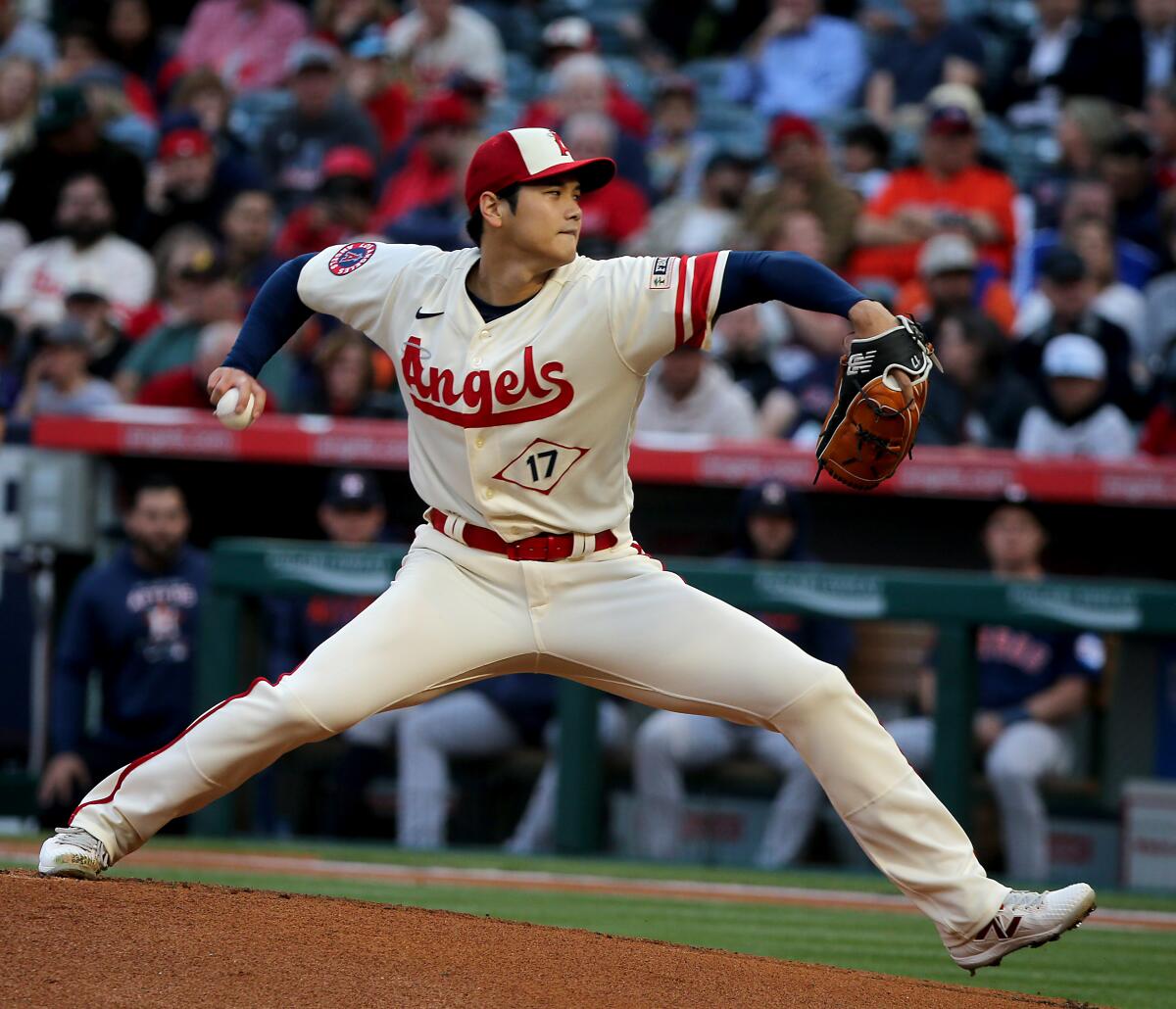
“When Frank taught me to do this, the return rate to the previous level of play if you were having a revision was 30% to 33%,” ElAttrache said. “Nobody at that time, if you were having this in the 1990s, made it back to being a starting pitcher if you were having a revision Tommy John.”
But those success rates on revisions have more than doubled, ElAttrache said, for a variety of reasons. Technology allows for earlier and more precise detection of tears and other problems. There have been various tweaks to the technique of using a wrist tendon to fortify the elbow. And the results on top-level athletes tend to be consistent because most of the surgeries are performed by a small number of experts, among them ElAttrache, Keith Miester in Texas and David Altchek in New York.
ElAttrache said Ohtani’s case is especially encouraging because of the specific details of his injury — although he declined to reveal those — and that he considers the chances of full recovery to be the same as a first-time Tommy John patient.
Ohtani underwent surgery in 2018 after trying various other remedies. It typically takes 14 months for a major league starting pitcher to return after Tommy John surgery. But pitching is only part of Ohtani’s game, and he was able to come back much sooner in a designated-hitter role.
“The first Tommy John we did in 2018, he was able to come back and hit at the beginning of that next season without any trouble at all,” ElAttrache said. “And when he tore his ligament this past year, he was able to stay active playing for the Angels and was part of that home-run race they were having. He was bombing home runs in August and September.
“So he played for about six weeks with a ligament that we knew was torn, and he didn’t have any symptoms at all when he was batting.”
With all the deferrals in Shohei Ohtani’s 10-year, $700-million deal with the Dodgers, the contract is actually a bargain.
In large part that’s because Ohtani throws right-handed but bats left-handed, and his right elbow is not under stress when he’s hitting from that side.
“If he was a right-handed hitter as well as a right-handed thrower, I wouldn’t have been as confident that I could let him go back to batting as quickly,” ElAttrache said.
Just as in 2019, Ohtani is expected to be back in the batter’s box by the start of next season, although every week counts, and ElAttrache said it will be up to Ohtani and his coaches as to whether he’s ready for the Dodgers-San Diego Padres series in South Korea on March 20-21, or the Dodgers’ home opener a week later.
If all goes as planned, Ohtani will be ready to pitch his first simulated game in September, around the time of the 50-year anniversary of the original Tommy John operation.
“The coincidence is so uncanny,” the esteemed surgeon said. “It seems like it was meant to be.”
More to Read
Are you a true-blue fan?
Get our Dodgers Dugout newsletter for insights, news and much more.
You may occasionally receive promotional content from the Los Angeles Times.

